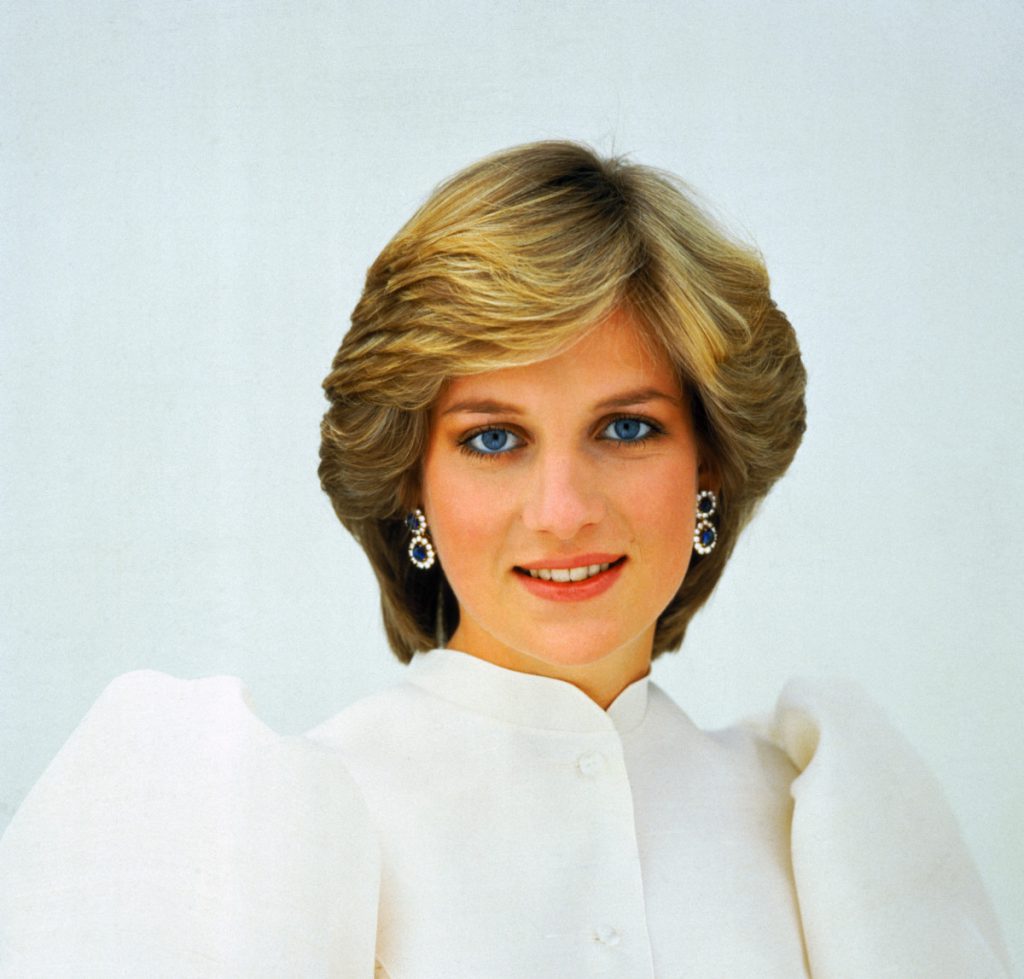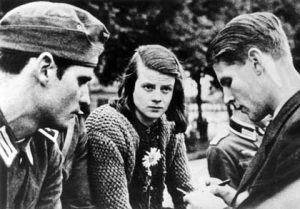Winner of the Fall 2019 StMU History Media Award for
Best Article in the Category of “People”
Two million people are cheering her name, 750 million eyes are upon her. She’s smoothing out her silk, ivory colored wedding dress embroidered with pearls and mother-of-pearl sequins. She is being transported to St. Paul’s Cathedral by five military police officers in a fairytale-like coach. Keeping her composure, she steps out of the stagecoach in her Cinderella-like wedding slippers. She walks up the steps of the Cathedral, head held high, the Spencer family tiara decorating her gorgeous short, blonde hair. As she enters the dome, all eyes are drawn to her glowing, innocent features and the twenty-five-foot train trailing behind; the opening song is played by one of the three orchestras that her fiancé has chosen. The date is July 29, 1981, marking the wedding of Prince Charles to Lady Diana. Diana knew that becoming Princess of Wales was going to be a great responsibility, one that couldn’t be taken lightly. She strongly believed it was either going to be a fairy-tale dream come true or a total nightmare; either way, it was too late that day for her to change her mind.1

Charles was absent for a lot of the first year of their marriage: he tended to his royal duties, participated in shooting, polo, and painting pictures. He lived a comfortable, no strings attached life with Diana that first year. Once, he even admitted to his past liaisons with some married women. They were deemed a “safer choice” because they would keep quiet—due to having families and husbands. Charles assumed Diana would fit perfectly into his lifestyle like a missing puzzle piece. This was not the case, as Diana and he had very different forms of entertainment and pastimes; there was also a rather large age gap of fourteen years.3 During their engagement, when Diana was nineteen and Charles was thirty-three, Prince Charles received a package. Diana, already suspecting Charles was hiding something, found a gold bracelet addressed to ex-lover Camila Parker-Bowles with the initials “F” and “G” intertwined; the initials were of the nicknames they had given to each other.4 “This was about two weeks before we got married…. So rage, rage, rage! ‘Why can’t you be honest with me?’ But, no, [Prince Charles] cut me absolutely dead.”5 Charles denied the accusations, making her feel paranoid and leaving her with second thoughts about marriage. Diana claimed she had considered canceling the wedding, discussing the situation with her two sisters, both responding with “your face is on the tea-towels so you’re too late to chicken out now.”6

The public viewed the wedding with a lot of admiration, so much that it blindsided them. The public was completely unaware that Diana could not handle the public scrutiny; her face was on every magazine cover and she was all the media talked about. Princess Diana was portrayed as calm and very put-together; she carried herself in a way that didn’t expose her weaknesses. This was the very mindset of the royal family, any form of unwanted exposure was immediately hidden or covered up, and she learned this a little too late. The wedding that was perceived as “a ceremony that bore the weight of centuries of national tradition” had a tragic story behind it.7
Diana would frequently visit the kitchen where she would participate in binge eating behaviors, such as eating endless bowls of ice cream and special snacks at request. Staff and friends were concerned about Diana’s dietary habits; she was so thin despite consistently raiding the fridge and eating excessive amounts of food in one sitting. Although they would frequently see her overindulge in food, Diana would make herself throw up five to six times a day. Diana claimed that her disorder was first triggered because of a comment Prince Charles made.8 “My husband put his hand on my waistline and said, ‘Oh, a bit chubby here, aren’t we?’ and that triggered off something in me—and the Camilla thing, I was desperate…. I remember the first time I made myself sick.”9

Diana started slipping into the deep end; her first pregnancy was tough on her body. Apart from morning sickness, Diana suffered from bulimia. Bulimia nervosa is characterized by recurrent episodes of binge eating followed by compensatory behaviors to prevent weight gain by self-induced vomiting, fasting, or excessive exercise. The onset of bulimia nervosa can be due to stressful life events and usually develops between adolescence and early adulthood. There is an increase in depressive symptoms and depressive disorders in affected individuals as well as a higher suicide risk. Mood disturbance begins at the same time or during the development of the eating disorder, but in other individuals, predates the illness.10
Diana became desperate; she would run around with a lemon knife. Diana knew something was wrong with her but didn’t know how else to ask for help. When she did reach out for help, Charles thought Diana was crying wolf and dismissed her threats. Charles became alarmed and overwhelmed by Diana’s frequent mood swings, her consistent crying, and obsession with his old mistress, Camilla Parker Bowles. He believed that she was being immature and seeking attention, so instead of helping his wife, he went riding on the Sandringham estate. Diana almost felt challenged by his response, so at two months pregnant, Diana placed herself at the top of a wooden staircase in Sandringham and threw herself down the stairs.11 “Very, very difficult pregnancy indeed. Sick the whole time, bulimia and morning sickness…. I didn’t know which way to turn at all…. Charles said I was crying wolf and I said I felt so desperate, and I was crying my eyes out, and he said, ‘I’m not going to listen. You’re always doing this to me. I’m going riding now.’ So I threw myself down the stairs.”12
Some could claim that Diana was immature and naive and in reality, she was just a child. Diana had just become a young adult when they were married; she still had an illusion of a perfect marriage, one that wouldn’t suffer from difficulties. Her mindset was heavily influenced by her childhood; Diana’s parents’ troubled marriage and their frequent fights, even after their divorce. She didn’t want her marriage to end up like her parents. Diana believed that a Royal marriage would complete the pretty picture she painted in her head, it couldn’t possibly be any less than perfect—after all, that is what she had read in novels.13
At this point, Diana knew that she wasn’t going to get what she wanted or what she needed: stability and compassion. Instead, she was being scorned and her feelings were minimized. “I was thrown into the deep end,” she said of royal life. “Nobody ever helped me at all.” This incident was one of many cries for help during their first year of marriage.14
Diana made several other threats to her life; she began engaging in self-mutilation. In one incident Diana threw herself against a glass display cabinet at Kensington Palace and shortly after, slashed her wrists with a razor blade. Even during an argument with Prince Charles, she picked up a penknife and cut her chest and thighs.15 Still, Diana kept up a happy-go-lucky persona for the public and continued her duties as Princess of Wales. In the midst of a troubled time, she grew and matured; she found herself. Even if Charles solely wanted to please his parents by marrying Diana when his heart belonged to someone else, she was beloved by so many and the public saw her as one of their own. Diana was one of the only Royals that didn’t make the masses feel like less than they are.16 She was able to find herself through the volunteer work she engaged with and by connecting to the public.17
Diana was perceived as having it all, being the “It Girl” only to be revealed that within those palace walls, she was living a nightmare.
- Anne Matheson, “A Day of Splendour and Romance,” Australian Women’s Weekly (2018): 48. ↵
- Barbara Cartland, “Royal Marriage: When Life isn’t a Romantic Novel,” Newsweek 120 (1992): 72. ↵
- A Biographical Encyclopedia, 2002, s.v. “Women in World History,” 591. ↵
- Andrew Morton, Diana: Her True Story (New York: Pocket Books, 1992), 90. ↵
- Andrew Morton, “Diana’s Secret Tapes,” People 88 (2017): 88. ↵
- Andrew Morton, Diana: Her True Story (New York: Pocket Books, 1992), 91. ↵
- Barbara Cartland, “Royal Marriage: When Life isn’t a Romantic Novel,” Newsweek 120 (1992): 72. ↵
- Andrew Morton,Diana: Her True Story (New York: Pocket Books, 1992), 96. ↵
- Andrew Morton, “Diana’s Secret Tapes,” People 88 (2017): 88. ↵
- American Psychiatric Association, Diagnostic and Statistical Manual of Mental Disorders Fifth Edition (Arlington, VA: American Psychiatric Association, 2013), 345-347. ↵
- Andrew Morton, Diana: Her True Story (New York: Pocket Books, 1992), 104-105. ↵
- Andrew Morton, “Diana’s Secret Tapes,” People 88 (2017): 88. ↵
- Barbara Cartland, “Royal Marriage: When Life isn’t a Romantic Novel,” Newsweek 120 (1992): 72. ↵
- Andrew Morton, “Diana’s Secret Tapes,” People 88 (2017): 88. ↵
- Andrew Morton, Diana: Her True Story (New York: Pocket Books, 1992), 105. ↵
- Martha Duffy, “Fractured Fairy Tale,” Time Magazine 147 (1996): 60. ↵
- Encyclopedia of World Biography, 2004, s.v. “Diana Princess of Whales,” 531. ↵



102 comments
Mia Hernandez
This article was very sad and interesting. Princess Diana is my favorite historical figure and I actually did not know about Diana’s bulimia and depressive tendencies, but I did know about Charles’ affair. Someone as inspiring and helpful as her did not deserve a toxic relationship in which she got treated horribly. I liked how the article illustrated a story with great detail. It was a great article.
Yaniev Ibarra
Very sad to hear that even though Princess Diana had everything and appeared to be perfect was actually going through a rough time. Mental health issues are no joke, I feel for her for having to deal with these things while all eyes were on her. This article does a great job at really going into detail on the toxic marriage of Prince Charles and Princess Diana. Crazy to think that money really does not buy happiness, all she wanted was love and affection.
Emilia Caballero Carmona
Hey Vanessa, your article was so interesting because I have always wanted to learn about princess Diana’s life. I learned that she did have a lot of personal family issues from her past which indirectly affected her marriage to prince Charles. It’s sad to see how she had everything a woman would ever want, but she did not feel loved or appreciated by her husband.
Keily Hart
This is a very interesting article, most stuff about Princess Diana revolves around the end of her life, and all sorts of conspiracy theories. Its nice to see an article about her life prior to that, even if it is sad. Its awful that her marriage was so toxic. nobody deserves to be gaslit like she was while she was pregnant.
James Davis
Wow, I had no idea about any of this. To be honest, I know nothing of Princess Diana besides her being Royalty and then her untimely death. To know how tragic her personal life really was makes it even more sad. Knowing that she dealt with self mutilation, bulimia and other mental issues makes her story heartbreaking. Especially seeing how her husband refused to help her and accused her of being a child. How sad. Thank you for this very informative article.
Angela Calderon
I actually had not known about about Diana’s bulimia and depressive tendencies, but I had known about Charles’ affair, the rules of royalty, and the death of Diana and her lover. Seeing how stressed Diana had become as a result of palace life and her husband comes as no surprise with all of the press on Prince Harry and his wife Meghan Markle. The mass of articles surrounding their wedding revealing the many rules attached to becoming a royal were illuminating. It’s no wonder they took time away from the United Kingdom and the media’s fixation on them. It’s also no wonder that Diana’s “It Girl” lifestyle wasn’t what it seemed. Prince Harry, Diana’s son, even goes so far as to claim that the “game with the media” is what ultimately cost Diana her life. The reality of royal life is grim and not at all like the fairy tales.
Elizabeth Santos
I’m not surprised by the fact that the public was blind to the toxicity of Prince Charles and Diana’s relationship, as the quote “love is blind” says, the public admired the royals too much to ever look past the positive facade. This article is so eye opening to the real story, and I believe Princess Diana would have wanted more information like this out there rather than her face on magazines. Reading about her deteriorating mental health has been dismal, but in a positive light, it highlights that people of high status are just like us.
Aracely Beltran
Amazing article! It is amusing when we find out that we have a much different perception of how people are living. I feel that we tend to assume a certain way of life for rich and famous people when we can see that is not always the case. Like the author said Diana was thought to be “the “It Girl” only to be revealed that within those palace walls, she was living a nightmare.”
Brandon Torres
This article really enlightened a very well known topic, and I am thankful for that! Many people know of this very famous individual, however the fact that so many different aspects of her were explained in this article, really makes the fact known that the author did their research! Even with the mentioning of Princess Diana being quite naive and immature, really shows that no level of bias was present in trying to maintain this royal representation of the late Princess and that equality is just wonderful!
Juliana Montoya
This article really shocked me of all the things that Diana had gone through when she was with Charles. She is a very big inspiration to many people in the world, especially to many young women around the world. I never knew about Diana throwing herself down the stairs or cutting herself but it shows how marriage is not always a complete fantasy.